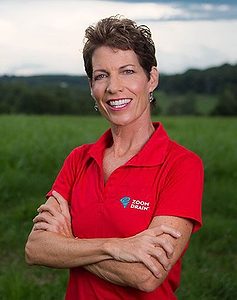The Ride-Along, Part 2
Ten tips to make the most of your windshield time, and when you are on the job together.

In my column last month, we explored my very best leadership development technique: the ride-along. I have built my career and businesses on spending time with frontline people, asking good questions, listening to answers and sharing the vision. This topic is deep and evergreen, so please join me in a continued conversation.
Ride-alongs are humbling. Just because you tell your techs to do something doesn’t mean it’s happening. Or even understood. Talking ain’t training. I’ve experienced that brutal reality many times myself.
I promised to share specific tips for making the most of your windshield time, as well as what to say and do when you are on the job together. So, with no judgment and only love, here goes!
1.Set up the tech up for success. Don’t treat the ride-along as an opportunity to “bust” someone for bad performance. Communicate that the purpose of your ride-along is to be of service. To get to know each other. Maybe have some fun. Solve some problems. To help your tech be successful.
Suppose you are going to ride along with Joe …
2. Give him a heads up. “Joe, I’m riding with you today! Take 15 minutes to get the truck ready and complete your Truck Inspection Checklist.”
3. Reduce the anxiety. Joe may say, “You won’t get a real look at how I can perform. Your being here changes things.” That’s true to a point. However, Joe will probably do most of what he normally does. We are creatures of habit. Joe has a routine, one he may not be aware of. Just notice it. And, if Joe has never put booties on before and he makes his first attempt with you, you’ll know.
4. Use a checklist. If you have already created a Service Call Checklist or procedure, trot it out. If you don’t have one, you may use ride-alongs to assemble your first draft. If your checklist is a mile long with a hundred steps, you might create a mnemonic or shortcut for remembering the main points. Like this — ODPAF.
- Open the call: Greet the customer and establish a relationship.
- Discovery: Ask good questions and listen closely. Look for needs and wants.
- Problem solving: Present product and service options, listing the benefits related to what you discovered.
- Ask: When you ask for the sale, stop talking until the customer says yes or no.
- Follow up: If yes, do as promised. If no, ask a clarifying question.
Note, there are many ways to do each step. Your formal checklist may have lots of substeps. For so many techs, it’s just too much, at least for starters. The main steps are essential. As a service manager or field supervisor, I would drill the main steps continually to get the lingo and the process known. This makes it easier to break it down to identifiable and teachable steps. Remember the why of the ride-along: to help techs be successful and reach their goals.
5. Review the checklist on the way to the job. Set Joe up to win by reminding him of the process.
6. Once you are on the job, be quiet. Let Joe be in charge of the call. Don’t speak unless spoken to. If spoken to, steer the conversation back to Joe. “Joe is the expert. It’s been a while since I’ve been in the field. That’s why I’m tagging along today. Joe, what do you think?”
Unless someone’s life is in danger, do not take over. It’s OK if he loses the call. If you take over the call, you lose the teachable moment. It’s now your call. As an alternative, on a future ride-along, you may be the lead tech and let Joe be the helper.
7. Review the checklist after the job and debrief how the job went. Do this in the cab of the truck as you drive to the next call. There is a little “close” at each step. A win or a lose. “Joe, imagine there is a light bulb between you and Mrs. Fernwicky. The light can get brighter or darker throughout the call, depending on what’s happening between you two.” (Thanks to Tom Rosenthal for this awesome analogy.) Discuss if or when the light started to dim.
If he made the sale and successfully did the work, the light bulb was probably pretty bright. Bask in the win and relive it. Reinforce winning behaviors. If Mrs. Fernwicky said, “No,” the light bulb went out somewhere along the way. As you debrief, discuss when that happened. It’s usually at a skipped or poorly executed step in the process.
8. Give the tech one thing to work on. Something he did well and could refine. Or something that may help him keep the light bright. “Joe, you skipped the discovery step. You didn’t ask any questions. On this next call, remember to ask three helpful discovery questions.” Role play on the drive to the next call.
If on the next call, Joe asks questions, he is demonstrating a willingness and a capacity to learn. This. Is. Huge. Even if he does it awkwardly, this is a big win. Visit with Joe about his goals, personally and professionally. What skills does he need to develop to reach them? Commit to helping him achieve them.
9. Be generous with your love and praise. If Joe is reaching goals and not violating any policies, he may be just fine doing what he is doing! Thank him for his service. Be willing to give an unconditional, “Well done.”
Good stuff, right? There are a lot of nuances to the ride-along. You’ll have your own unique adventures. It’s always worth it to spend one-on-one time with your team members.
10. Get real. Perhaps you have someone on the team who isn’t succeeding. He has gone through your training. He should be successful — operationally, technically and hitting sales goals — but he is not. You may engage the steps of corrective action: verbal warning, written warning, suspension and termination of employment. This is appropriate if he has violated a written policy or failed to use a procedure.
You might ask, “Joe, would you like my help? We can spend time every day working technical, operational and sales skills. I’m offering all the tools and time at my disposal. Are you game?”
Because if he isn’t, it’s OK if he doesn’t work for you. It’s not OK to have someone on your team who is chronically losing. Ultimately, if a person is basically capable (he can do the job) and willing (he will read, follow and use a checklist, for example), he can get good enough to be successful.
The ride-along is a great way to find out what your team members really want. Sometimes what they want aligns with what you want. Sometimes, they move on and you may even nudge them along. For the time they are with you, may you be a powerful, positive influence on their lives.
“Constant, gentle pressure is my preferred technique for leadership, guidance and coaching.” — Danny Meyer, founder of Shake Shack and CEO of Union Square Hospitality Group.
Let’s hear from you! Thoughts about your ride-alongs? Fears or tears? Triumphs? Reach me at ellen@ellenrohr.com or www.ellenrohr.com.





